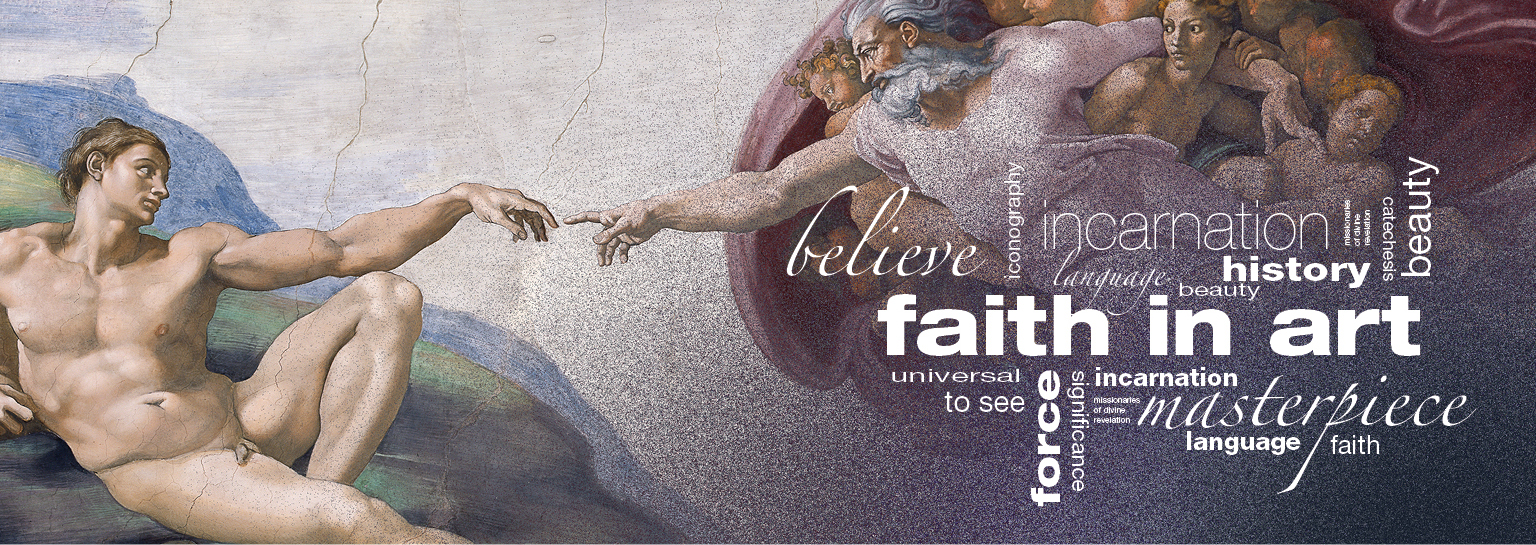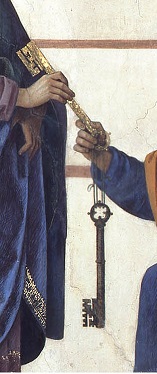Pietro di Cristoforo Vannucci, better known as Pietro Perugino (1450-1523), was an Umbrian painter of the High Renaissance who realised the exceptional fresco entitled ‘The Handing of the Keys to St Peter’ between 1481/2 in the Sistine Chapel, Vatican City, Rome. The fresco forms part of a series of mural decorations that gave the Sistine Chapel its original appearance. The frescoes, realised on the lateral walls of the Chapel, depict the story of salvation through the events in the Old Testament relating to the life of Moses and on the opposite wall the New Testament showing the major events in Christ’s life.
The fresco ‘The Handing of the Keys to St Peter’ portrays Christ founding the Church on the rock of Peter and the conferring of the keys from St Matthew’s Gospel (Mt 16:17-23).
The foreground of the fresco shows Christ handing the keys to Peter surrounded by the other Apostles. The keys, one gold and the other silver, representing Divine power and temporal rule respectively, remind us of Peter’s power to ‘bind and loose’ (Mt 16: ). Upon closer inspection you can clearly see that the golden key indicates Christ. This serves us as a reminder that, even though the media may speculate otherwise, it is Christ, by the power of the Holy Spirit, who decides who leads the Church.
Returning to the foreground of the fresco we see the figure of Peter, kneeling humbly accepting his commission from Christ. Peter’s kneeling position reminds us all that the Holy Father is what Pope Gregory the Great called “the Servant of the Servants of God”. We are reminded that the Holy Father is, above all else, the Vicar of Christ called to serve the Lord by leading His flock until His triumphant return.
Behind Peter, we see the figure of St John – during the handing of the keys St John is praying! Praying for Peter! This is the example of the attitude of the Church because each day should pray for the intentions of the Holy Father as part of our morning prayer or our Rosary intentions.
An Unbroken Link with Christ
Perugino composed this fresco with an interesting mix of renaissance architecture, members of Pope Sixtus IV court flanking the group of the Apostles wearing contemporary 15th Century clothes to remind us that Christ’s commission to Peter has been passed on to his successors today.


